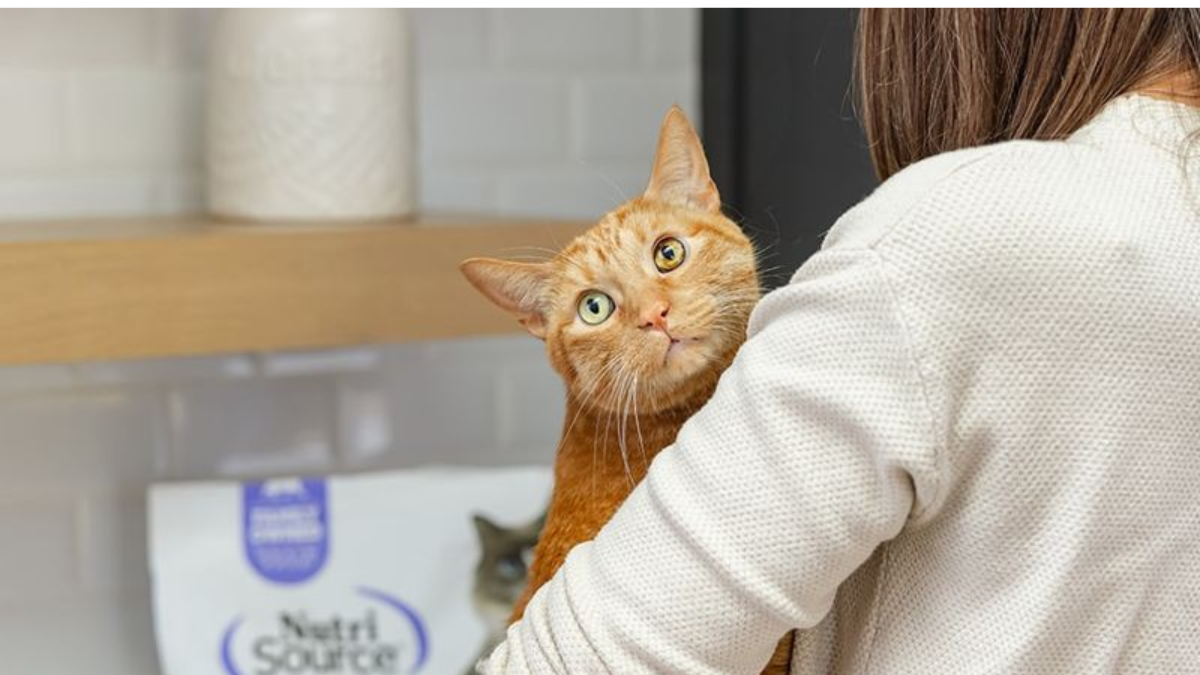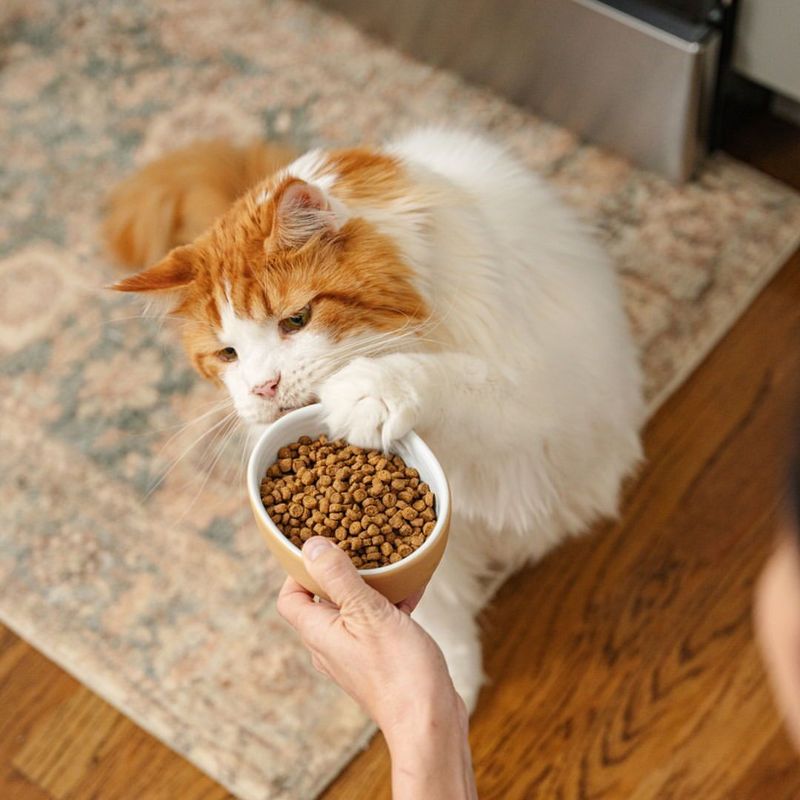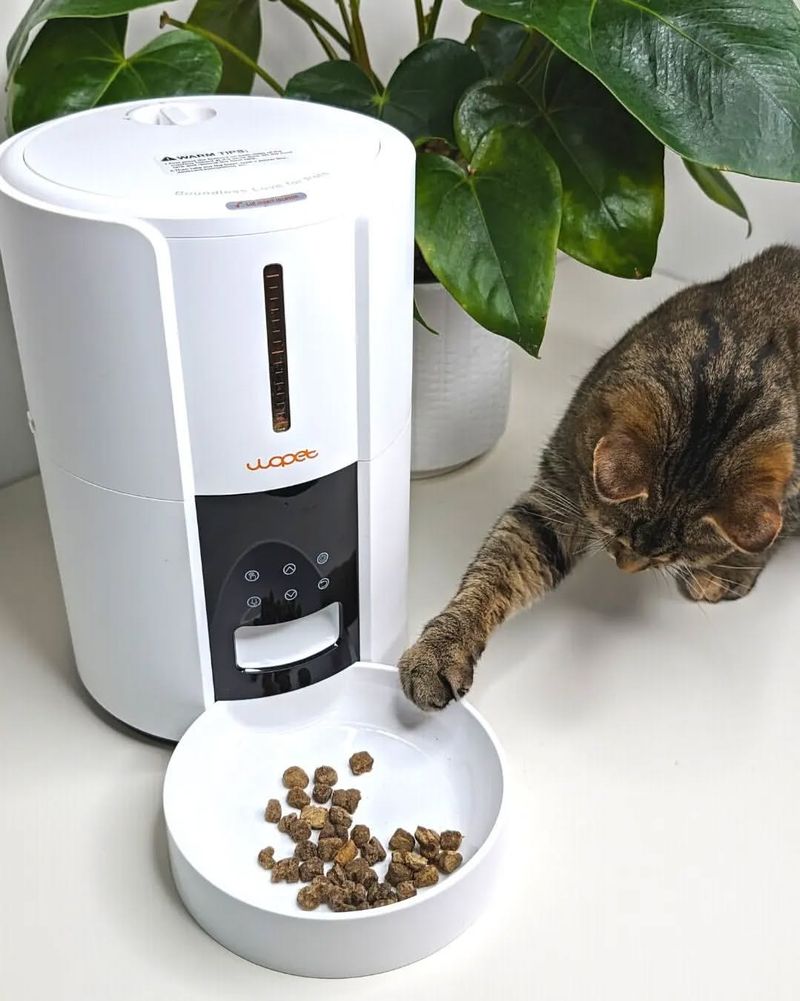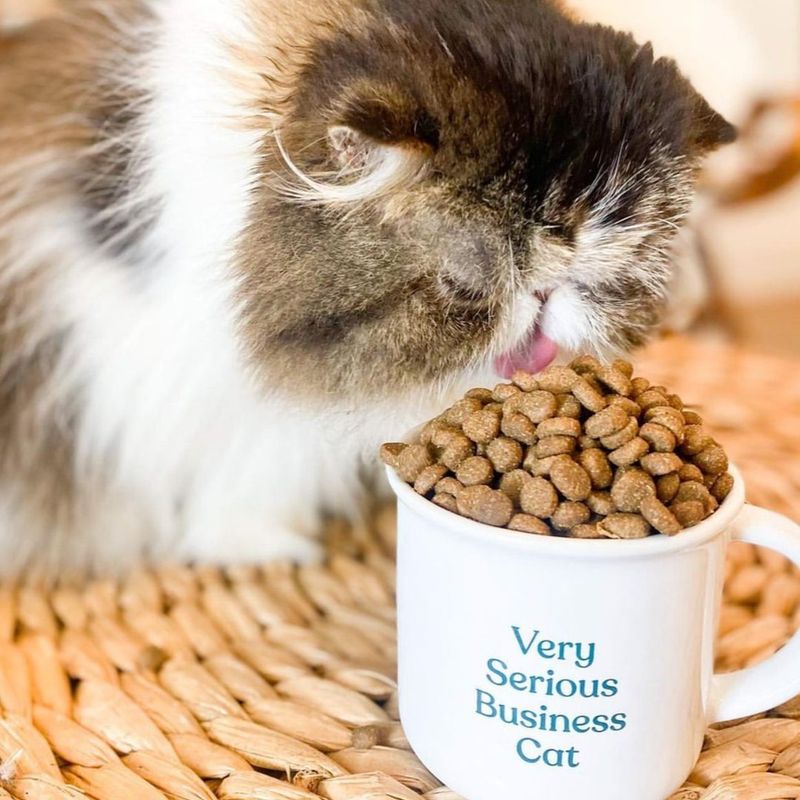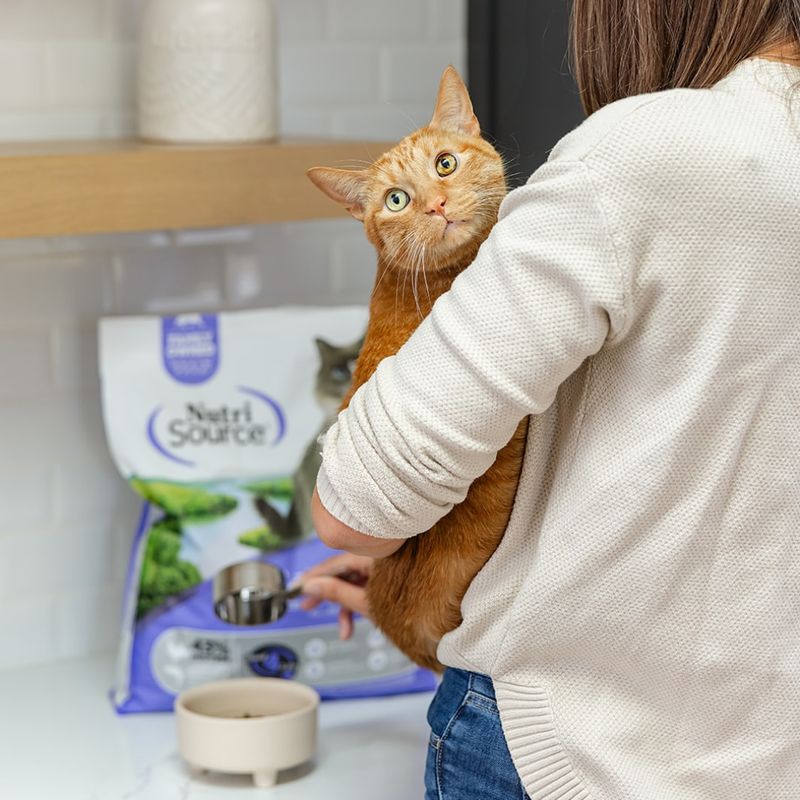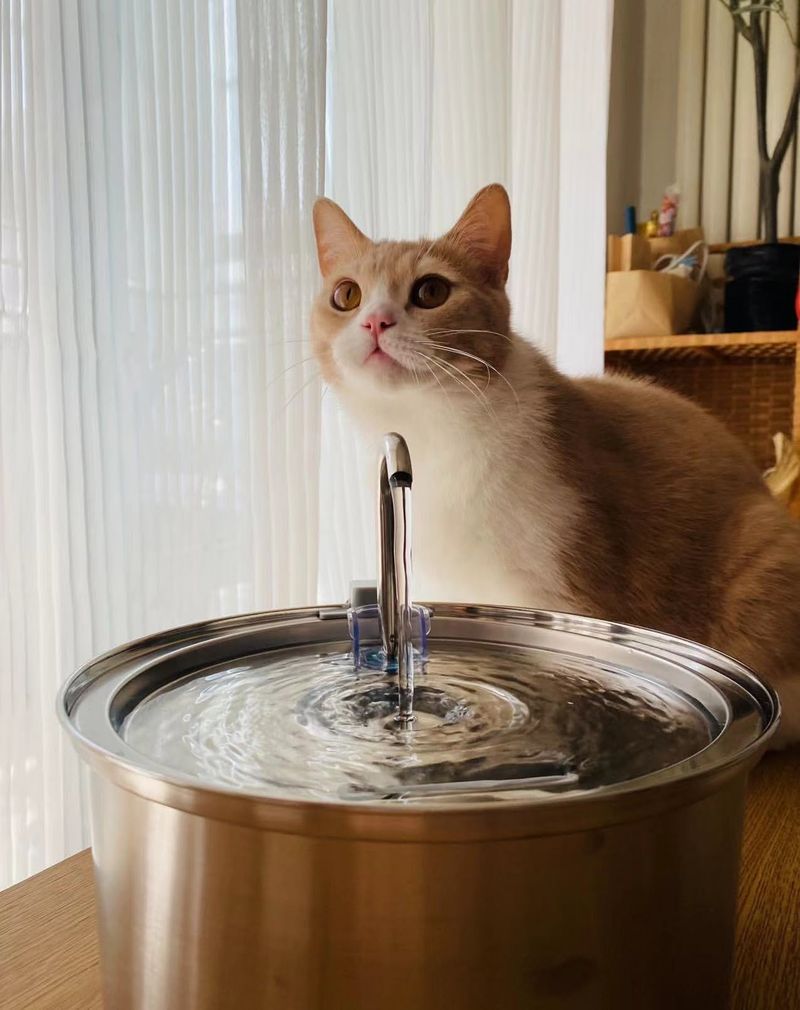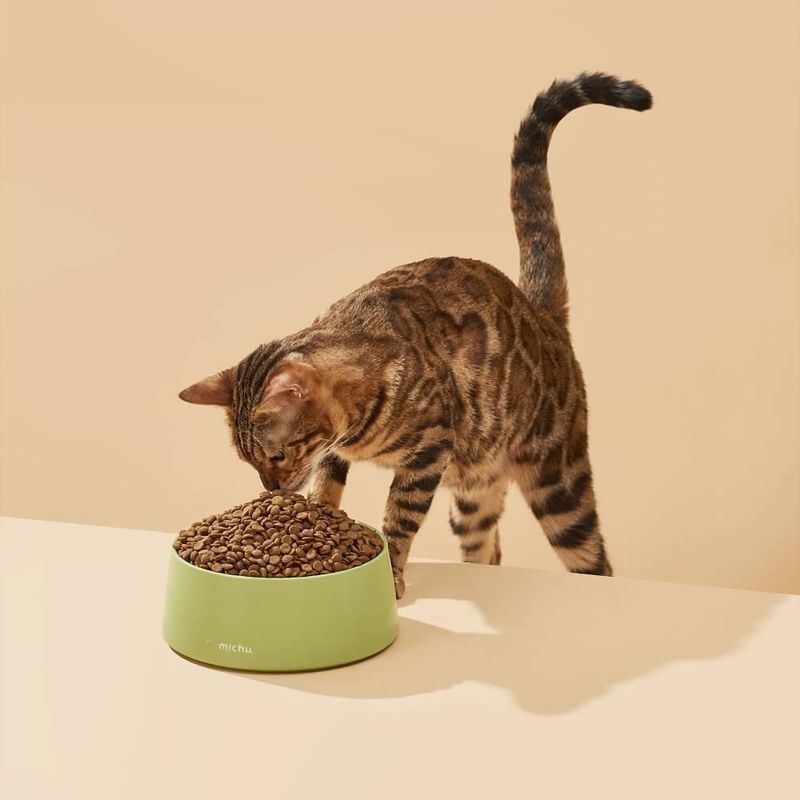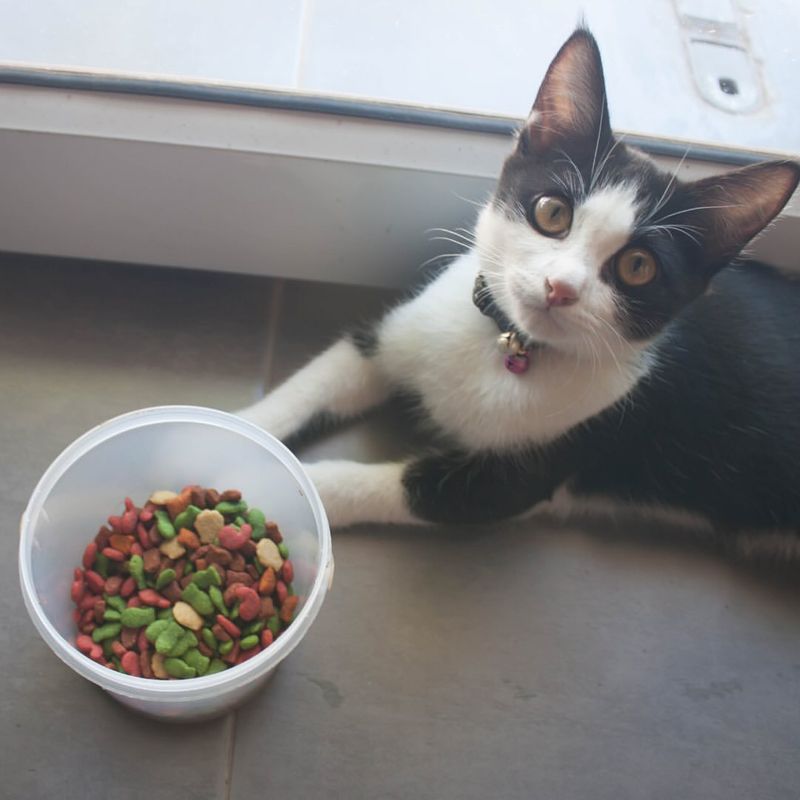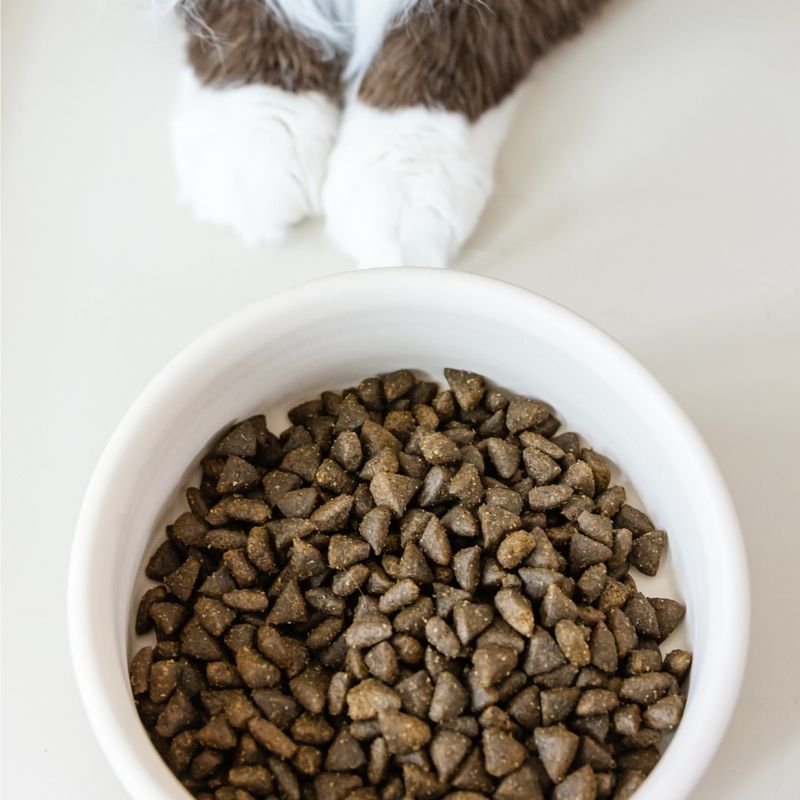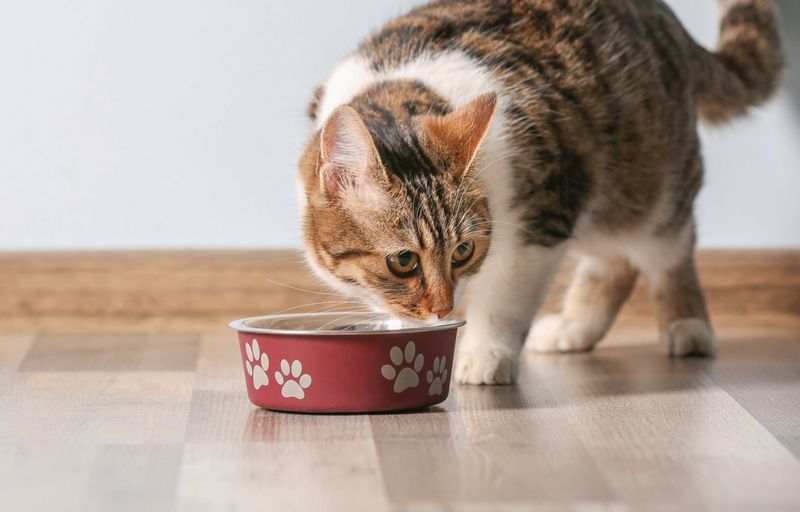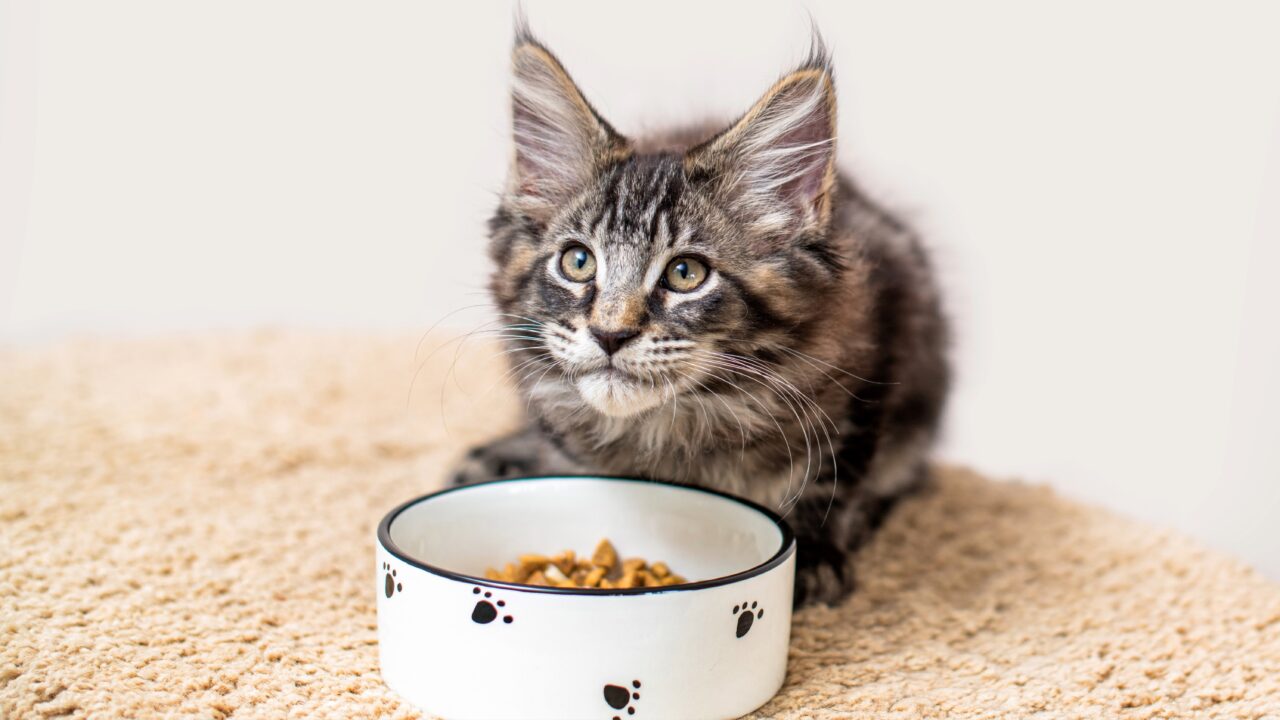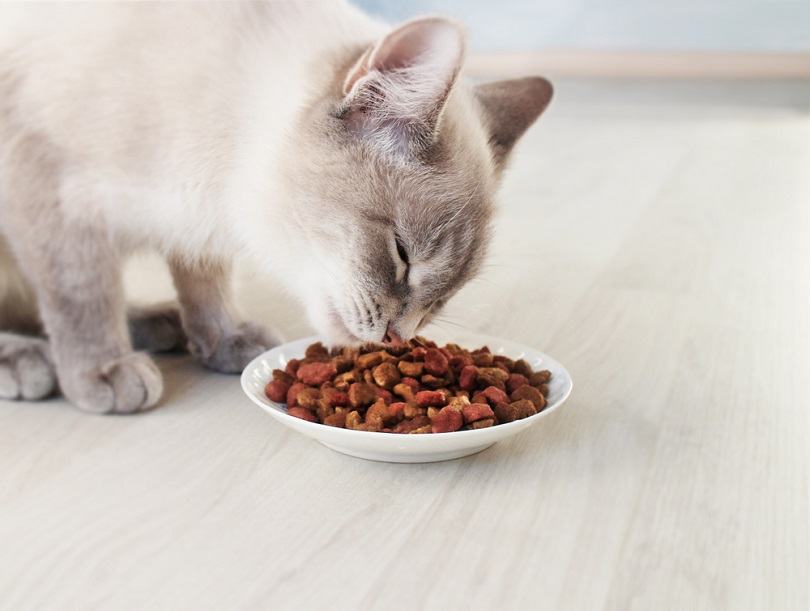📖 Table of Content:
- 1. Convenience and Shelf Life
- 2. Dental Health Benefits
- 3. Portion Control and Caloric Density
- 4. Cost-Effectiveness
- 5. Hydration Considerations
- 6. Nutritional Balance
- 7. Storage and Longevity
- 8. Variety and Flavor Options
- 9. Controlled Ingredients
- 10. Ease of Transition
- 11. Hairball Control
- 12. Reduced Spoilage
If you’re a cat parent, you’ve probably asked yourself at some point: Is dry food enough for my cat? With so much conflicting advice out there, it’s easy to feel unsure about what’s best for your feline friend. Some say kibble is perfectly fine, while others insist that cats need wet food to thrive. So, what’s the truth?
The answer isn’t as simple as a yes or no. While some cats can do just fine on a dry-food-only diet, there are a few important factors to consider—like hydration, dental health, and nutritional balance.
To clear up the confusion, we’ve gathered 12 vet-approved reasons why dry food might be enough for your cat (and what you should keep in mind if you choose this route).
1. Convenience and Shelf Life
Dry cat food is often praised for its convenience and long shelf life, making it a popular choice among cat owners. This type of food can be left out for extended periods without spoiling, allowing cats to graze throughout the day. It fits seamlessly into the busy lifestyles of pet owners who might not have time for multiple feedings.
Additionally, dry food’s packaging is designed to be resealable, maintaining freshness over time. This makes it not only convenient but also a cost-effective feeding option. For those with multiple cats, managing feeding schedules becomes significantly easier.
From a storage perspective, dry cat food doesn’t require refrigeration and can be purchased in bulk. Its durability and ease of use appeal to many, though it’s important to ensure a balance with nutrients to avoid any dietary deficiencies.
2. Dental Health Benefits
Dry cat food is known to aid in maintaining dental health, providing a mechanical cleaning action as cats chew. The crunchiness of the kibble helps reduce tartar buildup and plaque, which are common dental issues in cats.
This mechanical action acts like a toothbrush, scraping against the teeth and cleaning them every time your cat eats. This benefit is particularly significant for cats that are prone to dental problems, as it reduces the likelihood of periodontal disease.
While not a substitute for regular dental care, dry food can be part of a holistic approach to maintaining oral hygiene. It’s important to combine this with regular vet check-ups to ensure comprehensive dental care for your cat.
3. Portion Control and Caloric Density
One advantage of dry cat food is its ease of portion control and caloric density. Measuring out portions is straightforward, allowing for precise control over a cat’s caloric intake. This is particularly beneficial for managing a cat’s weight.
Dry food’s caloric density means that even small servings can meet a cat’s daily energy requirements, making it easier to feed cats with higher energy needs or those on weight management plans. It’s essential for cat owners to follow feeding guidelines to avoid overfeeding.
Convenience in measuring portions contributes to maintaining a healthy weight, a crucial aspect of feline health. Consulting with a vet on the appropriate serving size can tailor the diet to individual cat needs, ensuring balanced nutrition.
4. Cost-Effectiveness
The cost-effectiveness of dry cat food is another reason many pet owners prefer it. Generally, dry food tends to be less expensive than wet food, making it a budget-friendly option for families with multiple cats.
Buying in bulk further enhances the savings, providing economic relief over time. The long shelf life of dry food means less frequent purchases, adding to its cost efficiency.
While cost is a significant factor, it’s vital to consider nutritional value as well. Ensuring that the dry food chosen is well-balanced and meets all dietary requirements is key to your cat’s health. Budgeting without compromising on quality can lead to optimal outcomes for both pet and owner.
5. Hydration Considerations
While dry cat food has many benefits, hydration is a crucial aspect to consider. Cats naturally drink less water, so it’s essential to ensure they consume enough fluids, especially when on a dry food diet.
Providing fresh water at all times is imperative. Some pet owners opt to supplement dry food with wet food to increase water intake, but with the right hydration strategies, dry food can remain a staple.
Utilizing water fountains or multiple water bowls around the house can encourage cats to drink more. Observing your cat’s water consumption helps ensure they remain hydrated and reduces the risk of urinary tract issues, which can be aggravated by inadequate water intake.
6. Nutritional Balance
Dry cat food can provide a well-rounded nutritional profile if selected carefully. Many brands offer formulas enriched with essential nutrients, vitamins, and minerals, catering to a cat’s dietary needs.
It’s crucial to read labels and choose high-quality brands that focus on balanced nutrition. Some dry foods are tailored for specific life stages, such as kittens or senior cats, ensuring age-appropriate nutrient intake.
Consulting with a veterinarian can help in selecting the best dry food option, ensuring it aligns with individual health requirements. Balanced nutrition through dry food can lead to healthy growth and maintenance, supporting a cat’s overall well-being and vitality.
7. Storage and Longevity
The storage benefits of dry cat food are noteworthy. Unlike wet food, dry versions do not require refrigeration, and their long shelf life makes them ideal for storage in bulk.
Pet owners appreciate the ability to buy large quantities and not worry about spoilage. This longevity ensures that food is readily available, reducing the frequency of trips to the store.
Proper storage in a cool, dry place keeps the food fresh and maintains its nutritional value. This aspect of dry food is particularly appealing to those with limited storage options or those looking to minimize hassle.
8. Variety and Flavor Options
Dry cat food comes in a wide range of flavors and textures, catering to the diverse preferences of cats. This variety allows pet owners to experiment and find the flavors their cats enjoy most.
Brands often offer unique flavor combinations, such as fish, chicken, and beef, providing options to prevent mealtime monotony. Rotating flavors can also keep cats engaged and interested in their meals.
With so many options available, it’s possible to find a dry food that satisfies even the pickiest eaters. This variety ensures that cats receive necessary nutrients while enjoying their meals, making feeding time a delight for both pet and owner.
9. Controlled Ingredients
One of the appealing aspects of dry food is the control over ingredients. Many brands highlight transparency in their ingredient lists, allowing pet owners to make informed choices about what they’re feeding their cats.
By choosing premium brands, cat owners can ensure the food contains high-quality proteins and essential nutrients. Some dry foods are even formulated for specific dietary needs, such as grain-free or hypoallergenic options.
This control ensures that cats with specific health issues or allergies can still enjoy a balanced diet. It’s crucial to carefully read labels and consult with a veterinarian when selecting dry food to meet your cat’s unique dietary requirements.
10. Ease of Transition
Transitioning a cat to dry food can be relatively straightforward. Gradual changes over time can help cats acclimate to new textures and flavors, minimizing stress.
Starting by mixing small amounts of dry food with their current diet allows for a smooth transition. This approach helps cats get used to the new food without sudden dietary shifts.
Cats often adapt well to changes when introduced slowly and methodically. Consulting a vet can provide guidance on the best transition strategies, ensuring that the change supports the cat’s health and dietary preferences.
11. Hairball Control
Hairballs may seem like a minor nuisance, but they can be quite distressing for cats. Crunching on dry food can significantly help reduce hairball formation. The texture of dry kibble aids in grooming, as it removes loose hairs and prevents them from creating troublesome hairballs.
Moreover, many dry cat foods are now formulated specifically to address hairball control. They contain natural fibers that promote healthy digestion, ensuring that ingested fur passes through the system with ease.
Ultimately, the right dry food can ease your cat’s discomfort and make the unpleasantness of hairballs a thing of the past.
12. Reduced Spoilage
Managing spoilage is a crucial aspect of pet food management. Dry cat food offers a distinct advantage by significantly reducing spoilage issues. Unlike wet food, which can quickly become unappetizing and spoil if left out, dry food remains fresh for extended periods.
This quality ensures that your cat always has access to food that is both nutritious and unspoiled. The convenience of reduced spoilage also means less waste, saving both time and resources.
For busy households, the lasting freshness of dry food is not just beneficial; it is indispensable.
